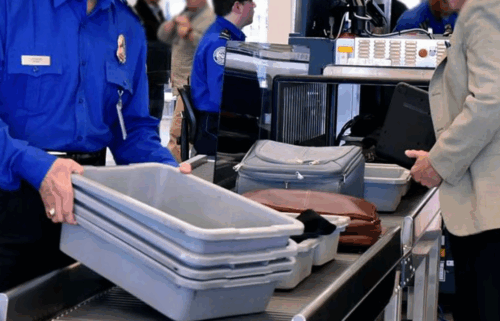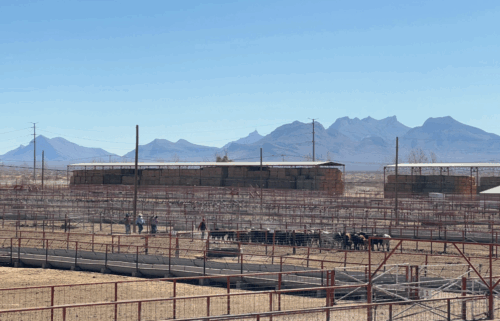US unemployment claims skyrocketed last week. There’s more pain to come
A wave of layoffs has gripped the American economy in the past week as bars, restaurants and shops shut down across the country, part of unprecedented efforts to control the spread of the coronavirus and keep health care systems afloat.
On Thursday, investors got a sense of just how much damage is being done.
Initial jobless claims soared to a seasonally adjusted 3.28 million in the week ended March 21, according to the Department of Labor.
That is the highest number of initial jobless claims in history, since the agency started tracking the data in 1967. The previous high was 695,000 claims filed in the week ending October 2, 1982.
The jump marked a massive increase from a revised 282,000 claims in the prior week. Prior to the pandemic, initial claims had been hovering in the low 200,000s each week, reflecting a strong job market.
The sudden spike is a major jolt to the labor market, which had been a point of strength for the US economy during its longest economic expansion on record. (Economists say that expansion has ended, and the US economy is in recession.)
And it’s not likely to be a one-off. Morgan Stanley predicts that jobless claims could “remain at quite elevated levels for the time being,” with layoffs continuing across the hospitality, retail and manufacturing sectors.
This could send unemployment surging to an average 12.8% between April and June, according to the investment bank. That would be the highest unemployment rate on records that go back to the 1940s.
Stimulus help: A $2 trillion stimulus package that’s moving through Congress could help ease some of the immediate pain and set the country up for a stronger rebound once the crisis ends. But it may not be enough to keep investors from panicking when the readout on jobless claims comes through.
US stocks shot up dramatically on Tuesday and rose again on Wednesday, the first back-to-back gains in more than a month. They’re vulnerable, however, to more bad news.
“While the data [is] surely not going to come as a surprise, [it] may still shock and bring home the economic implications of what is happening,” Societe Generale strategist Kit Juckes told clients on Thursday.
What’s in the $2 trillion stimulus package
The Senate has approved a historic $2 trillion stimulus package to prop up the US economy as it reels from the coronavirus pandemic, capping days of intense negotiations and putting the bill on a fast track to President Donald Trump.
A huge step: The legislation is one of the most expensive and far-reaching measures Congress has ever considered, dwarfing the $800 billion stimulus bill Congress passed in 2009 during the Great Recession. Investors have cheered the measure, sending the S&P 500 10.5% higher in the past two days.
So, what’s in the bill? Highlights include:
- Direct payments to individuals. Single Americans would receive $1,200 and married couples would get $2,400. Payments would phase out above certain income thresholds.
- Boost to unemployment benefits. Jobless workers would get an extra $600 a week for four months on top of their state benefits. Lawmakers also want to extend benefits by up to 13 weeks. A new pandemic unemployment assistance program would help those who aren’t traditionally covered, including gig economy workers.
- $500 billion lending program. The Treasury Department will be able to offer a huge amount of loans and loan guarantees, with some strings attached. This includes $25 billion for airlines, which will also receive $25 billion in grant money to cover wages and benefits for employees.
Coming up: The US House of Representatives will convene at 9 a.m. ET on Friday to consider the relief package. It would then go to Trump, who has indicated he will sign the measure.
Hotels hit hard by America’s patchwork shutdown
The United States — unlike countries like the United Kingdom, France and India — has not issued a blanket order for all citizens to stay indoors. But American hotels are still faltering as major cities shut down and travel slows to a trickle.
The data: Nearly 70% of the hotel rooms in the United States were vacant last week, according to data and analytics group STR. That occupancy rate is a 56% decline compared to the same week last year.
San Francisco and New York were the worst hit. Less than 17% of hotel rooms in both cities were occupied, according to STR. That’s a more than 80% decline for both versus this time last year.
Shares in hotel companies did get a boost from the stock market rally over the past two days. But Marriott, the world’s largest hotel chain, is still down nearly 44% this year, while Hilton’s stock is off 35%. The S&P 500 has dropped just over 23% in 2020.
Sign of strain: Marriott has put many of its employees on temporary leave for as many as three months. It’s moved ahead with furloughs at its hotels and at the corporate level.
Up next
Later today:
- G20 leaders will meet by videoconference to discuss the coronavirus pandemic. The European Council will also meet by videoconference.
- The UK government is expected to unveil a plan to help self-employed workers.
Coming tomorrow: The final read of the University of Michigan’s consumer sentiment index for March.




